10 discoveries for which we should say thank you to the Chinese Han Dynasty
The Han Dynasty ruled China for more than 400 years. It is not surprising that in Chinese historiography, the Han period is considered the most significant in history. During this time, the country has experienced many changes and made dozens of discoveries, for which people are still grateful to the Chinese.
Read more about these inventions in our article.
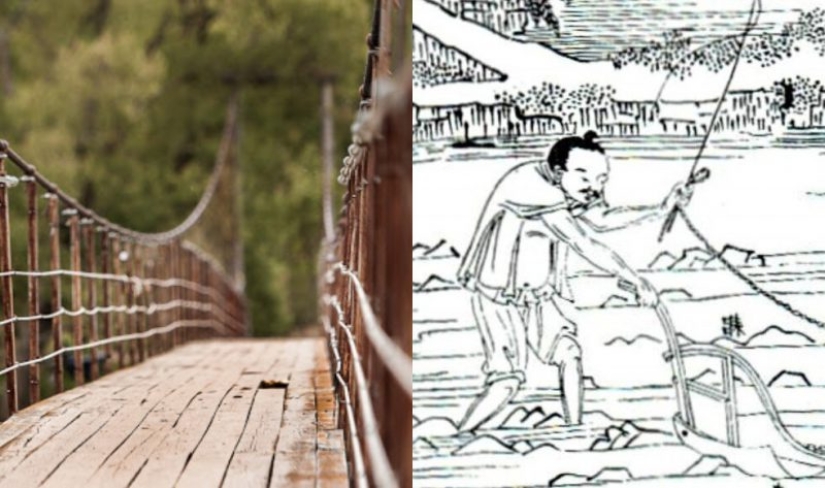
The first greatest invention of ancient China can be considered paper. And although its primitive samples date back to 87-140 BC, it was only in 105 (already AD) that paper production was improved. And this was done by the court eunuch of the Han dynasty-Tsai Lun, who came up with a unique technology for creating paper, which consisted of several stages.
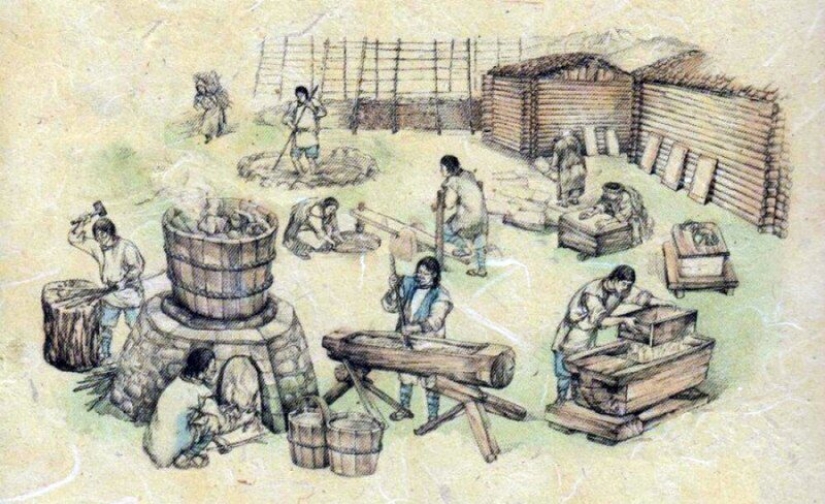
A mixture of crushed hemp, mulberry bark, old fishing nets and fabrics was brought to a boil to turn it into pulp. Then it was ground to a paste-like homogeneous state and mixed with water, after which the liquid was filtered through a sieve.
The resulting layer of fibrous mass was overturned on smooth boards, covered with other boards and placed on top of the load. When the sheets hardened, they were removed from the boards and dried. So it turned out a paper sheet.
It is believed that during the Han Dynasty (202 BC-220 AD), another great invention appeared, which later became the prototype of the modern compass. The device was a magnetic ironstone oriented in the north-south direction. In the ancient text "Lunheng", written in the 1st century AD, it is described as follows: "This tool resembles a spoon, and if you put it on a plate, its handle will point to the south."
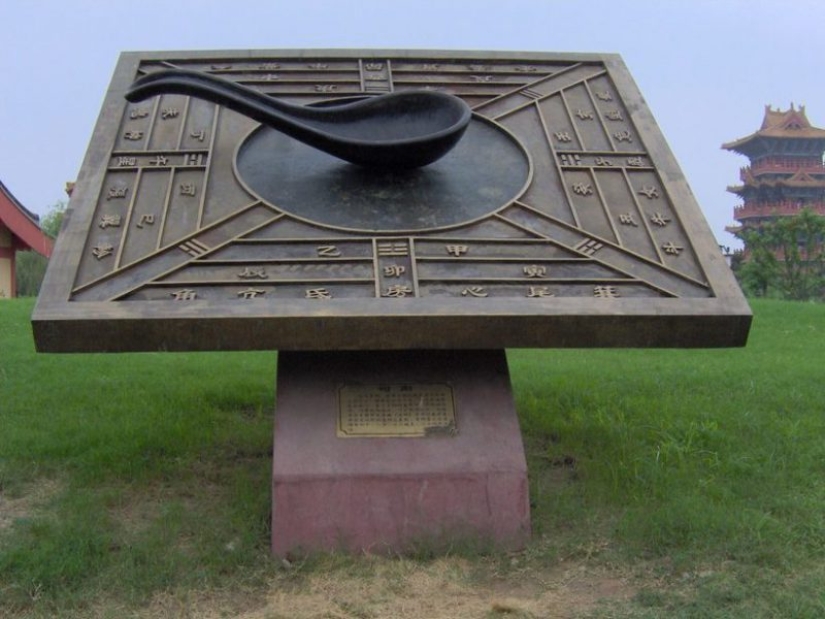
True, the Chinese used it not to determine the parts of the world, but for divination. The description of the magnetic compass as a tool that facilitates orientation on the terrain is set out in the Chinese manuscript "Wujing Zongyao" in 1044.
Although acupuncture is considered a pseudoscience, thousands of people are convinced of its effectiveness. This form of alternative medicine involves inserting needles into specific points of the body to relieve pain. The first mention of this practice was found in the texts of the Huangdi Neijing, compiled at the turn of the 3rd-2nd centuries BC, this time is called the period of the Fighting Kingdoms of the Han dynasty.

The oldest known acupuncture needles made of gold are also dated to the Western Han period (202 BC-9 AD). This gives every reason to assume that it was during this period that the Chinese began to use acupuncture for medicinal purposes.
The rotating fan, which was used for air conditioning, was invented in the Han Dynasty by engineer Ding Huang. The device had seven wheels, each with a diameter of as much as 3 meters! And they rotated them, of course, manually.

Later, in the Tang Dynasty (618-907), the Chinese began to use hydraulic power to turn the wheels. This miracle of technology was intended to cool a special Cool room in the imperial palace. It was also used to provide fountains with water.
The first seismoscope known to mankind was invented by the Chinese scientist Zhang Heng around 132 BC. The design was an urn with a pendulum. When an earthquake struck, the pendulum picked up the vibrations, swung harder than usual, and triggered a mechanism that turned one of the dragons on the urn toward the epicenter of the earthquake. At this moment, a ball was falling out of its mouth into the open mouth of the iron toad. This served as a signal that the earth's vibrations had become too active in the indicated direction.
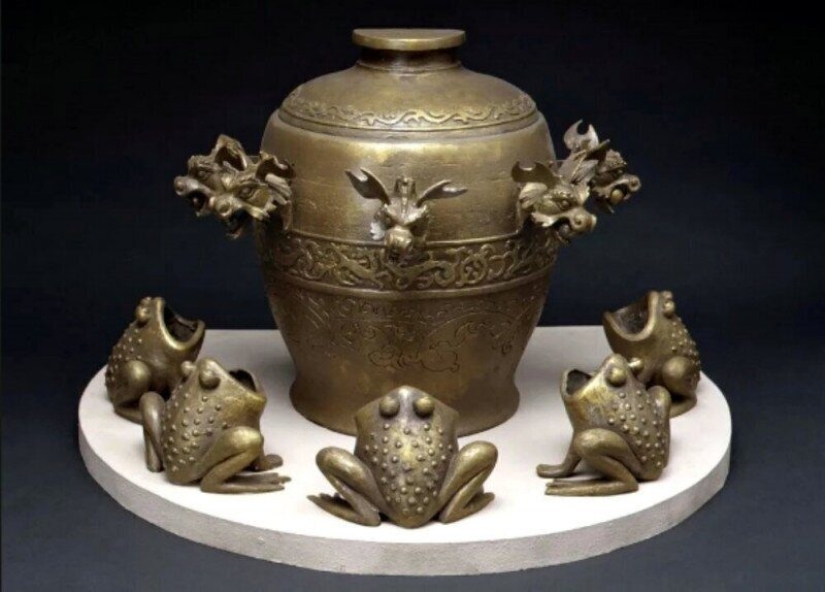
When the device passed the first test and indicated an earthquake, no one present felt anything. However, a few days later, the messenger reported that an earthquake had actually occurred in the direction indicated by the seismoscope, which is about 600 kilometers from the device.
In ancient times, ships were controlled by steering oars. It is easy to guess that there were big problems with the accuracy of the routes. In addition, the steering oar created obstacles in the control of the sails, limiting the potential for long ocean voyages. Therefore, it was usually installed on small vessels and high-speed water transport.
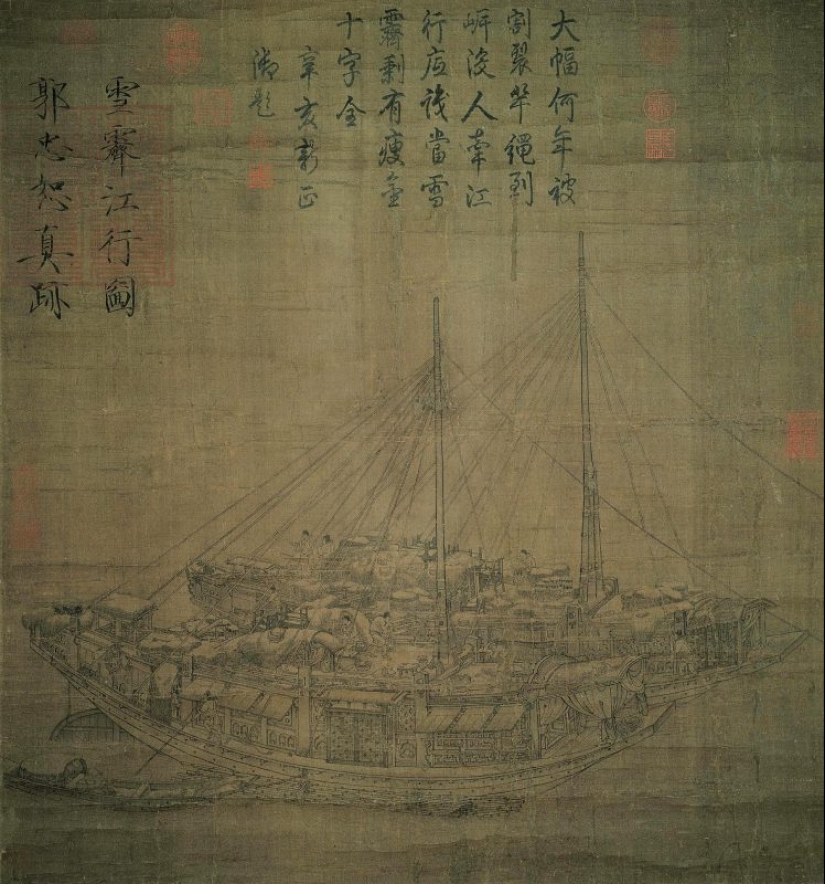
In the 1st century AD, the Chinese came up with a replacement steering oar for use on large ships that sailed long distances. And this replacement was the vertical aft rudder. The oldest images of the rudder on the stern of the ship are dated to 202 BC-220 AD, but the first mention was made in the treatise of Huainan-tzu even earlier.
There is evidence that many early cultures used hanging bridges on ropes, but the first written mention of such a bridge was made in the history and topography of Yunnan Province, written in the 15th century.
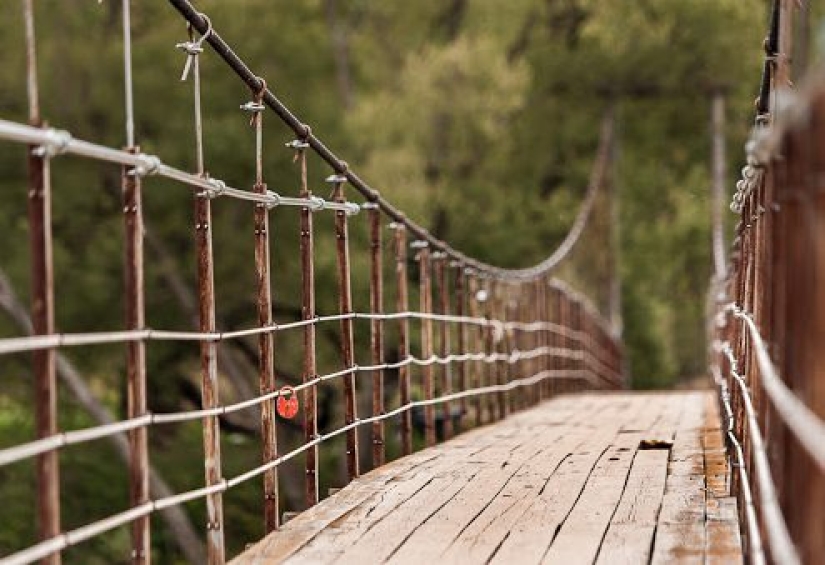
There is also an opinion that suspension bridges on metal chains existed in China during the Han Dynasty. It is believed that it was at the end of the 1st century AD that the first complex suspension bridges consisting of wooden planks appeared.
Now the world knows hundreds and even thousands of different diets for weight loss, weight gain or disease prevention, but once such a concept did not exist. I was the first to think of catering Zhang Zhongjing (ca. 150-219) and described this principle in the book "The Systematic Treasury of Medicine". At that time, he did not understand the meaning of vitamins, but prescribed to eat exactly the food that is now known as rich in various nutrients.
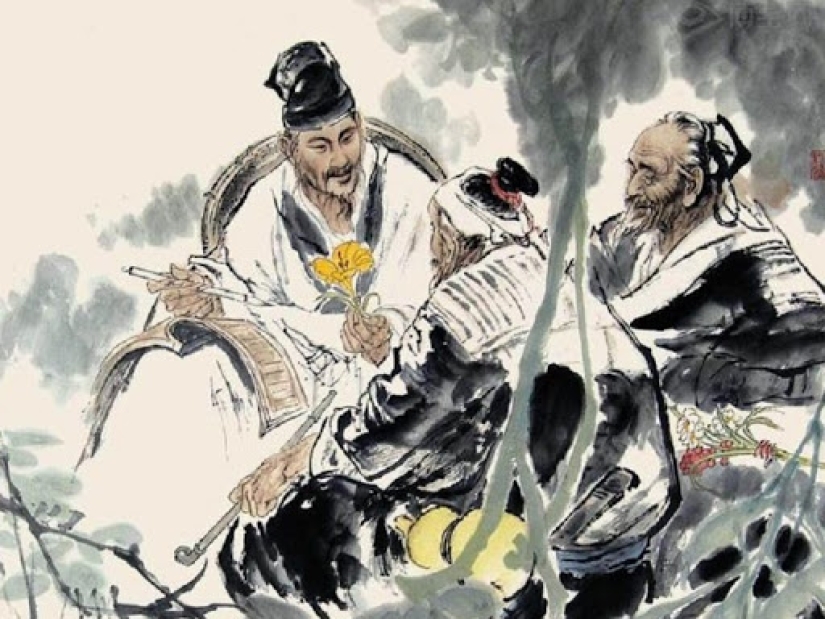
Records made during the Warring States period (403-221 BC) indicate that as early as the 4th century BC, the royal entourage included a personal nutritionist.
Construction wheelbarrow — an indispensable assistant during repair work. The simple design with one wheel allows you to maneuver even on the most difficult areas. It would seem that because of this, wheelbarrows should be unstable, but, on the contrary, carts with two wheels turn over much more often.
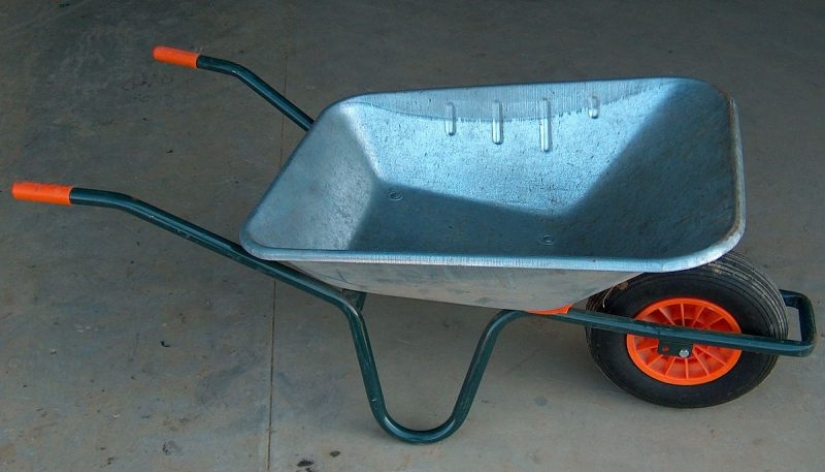
For the invention of this simple but useful device, we should be grateful to the ancient Chinese. It is assumed that they came up with the first construction wheelbarrows back in 100 BC.
The use of a simple wooden rahl in China began a long time ago: the oldest iron plows found in this area date back to about 500 BC. They were V-shaped and consisted of two flat ploughshares, which were mounted on wooden poles with special handles.
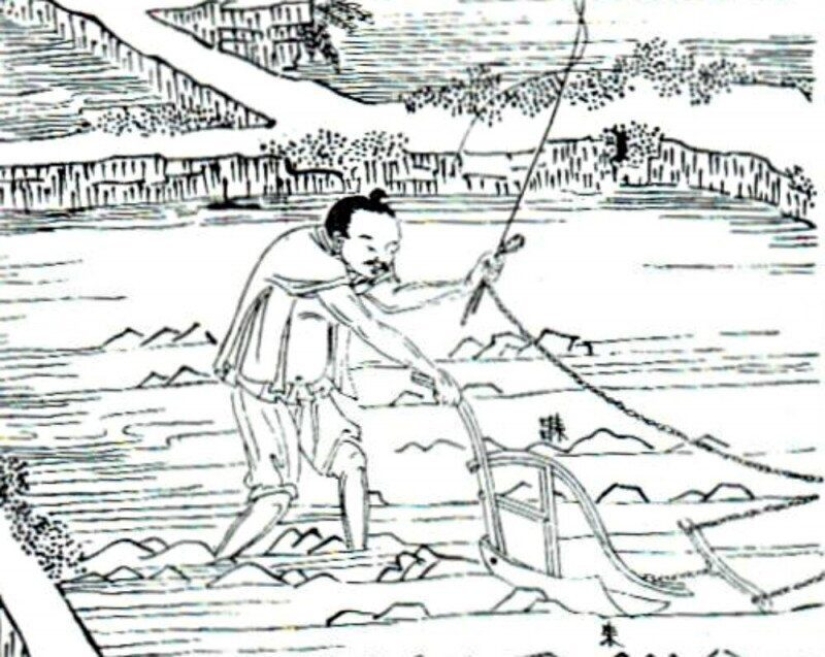
It was rather inconvenient to operate such plows, so the Chinese began to think about how to make this process less time-consuming. So in the 3rd century BC, heavy plow dumps appeared. The blade made it possible to turn over the layer of soil without polluting the coulters, as the earth was thrown in both directions by inclined wings.
Keywords: Invention | Chinese | Discovery
Post News ArticleRecent articles

A couple of years ago, Saudi Arabia officially banned celebrating the New Year. But this state is far from the only one where our ...

What do you associate the New year? Tangerines, chime, silver rain on the tree, gifts from Santa Claus and snow Maiden, and of ...
Related articles

The invention of flying machines that allow people to travel into the Earth's atmosphere is a list of the greatest innovations of ...

In the night from 16 to 17 September 1899 at the Kharkov Institute for noble maidens it has taken now several pupils. They suffered ...

China is famous for many things, including the number of fakes produced. From clothing and bags of famous brands to electronics, ...

This is for us, people, the New Year is one of the most important holidays of the year. But for animals, it's all a fuss, running ...